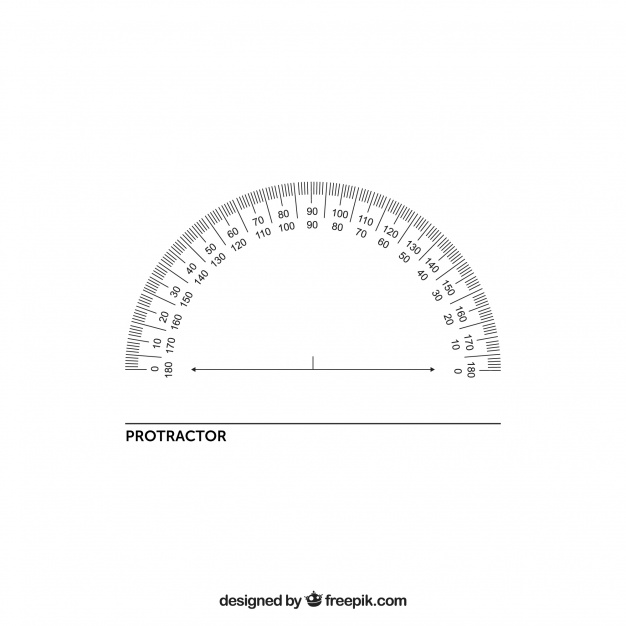50 Funny 2-Line Short and Hilarious Rhymes, Make You Laugh Out Loud
Here are 50 funny 2-line short rhymes that are hilarious. They can make you laugh out loud. What are they? Let's check them out, KLovers!

Kapanlagi.com - Mathematics can be a fundamental and important lesson taught at various educational levels. There are many interesting materials that can be learned in mathematics, one of which is about angles. Understanding different types of angles is important to learn. This knowledge about angles will be very useful in everyday life.
An angle is a shape formed by two lines spreading from a common point or vertex. Angles are measured in degrees. The different types of angles can generally be seen from their unit sizes. The maximum size of an angle is 360 degrees. Additionally, there are several angles with various sizes. What are they?
Summarized from various sources, here is an overview of the different types of angles.

What is an Angle? (credit: freepik)
In order to understand the various types of angles, it is important to first know the definition of an angle. As mentioned earlier, an angle is a geometric shape formed by two lines spreading out from a single point or vertex. The magnitude of an angle is expressed in degrees, ranging from 0 to 360 degrees.

Angles Based on Measurement (credit: freepik)
Angles have many types. One way to determine these types of angles is by classifying angles based on their size. Here are some types of angles based on size.
1. Full Angle
As mentioned earlier, the largest angle can reach 360 degrees. This angle is commonly referred to as a full angle. In addition, a full angle is also often known as a complete angle in English. A full angle will form a flat plane in the form of a complete circle.
2. Reflex Angle
The second type of angle is often referred to as a reflex angle. The size of a reflex angle is between 180 degrees and 360 degrees. This means that a reflex angle is also formed when two lines intersect and produce an angle between 180 degrees and 360 degrees. In English, a reflex angle is known as a reflex angle.
3. Right Angle
The next type of angle is a right angle. A right angle has an angle measurement of 180 degrees, neither less nor more. As the name suggests, when forming 180 degrees, an angle will produce a straight plane. In English, a right angle is known as a "straight angle".
4. Obtuse Angle
An obtuse angle is one of the types of angles. It is formed by the intersection of lines that form an angle between 90 degrees and 180 degrees. In English, an obtuse angle is called an "obtuse angle". Meanwhile, in mathematics, an obtuse angle can be written using the notation 90° < x < 180°, where x represents the measurement of the angle.
5. Right Angle
Among the various types of angles, a right angle is considered the most popular or well-known. A right angle has a measurement of 90 degrees, neither less nor more. Right Angle
A right angle is formed at the intersection of two perpendicular lines. In English, a right angle is known as a right angle.
6. Acute Angle
An acute angle is a type of angle that is smaller than a right angle. In other words, the size of this angle is between 0 degrees and less than 90 degrees, resulting in a pointy or narrow angle. An acute angle is called "acute angle" in English. The notation for an acute angle in mathematics is 0° < x < 90°, where x is the measurement of the angle.
7. Zero Degree Angle
As the name suggests, a zero degree angle has a size of 0 degrees. A zero degree angle can only be formed if there are two lines that are coincident, non-intersecting, so they do not form an angle. Zero degree angle in English is known as "zero degree".

Various Types of Angles Based on Position (credit: freepik)
Apart from their magnitude or measurement, angles can also be classified based on their position. Here are some types of angles based on their position.
1. Vertical Angles or Opposite Angles
Vertical angles are angles formed by two angles positioned opposite to each other, and they are formed by the intersection of two lines. Another name for vertical angles is opposite angles.
2. Adjacent Angles
Adjacent angles are a type of angle formed by three lines that intersect at a single vertex.
3. Supplementary Angles
Supplementary angles are angles formed by two adjacent angles, with the condition that both angles have a measurement of exactly 180 degrees.
4. Complementary Angles
Complementary angles are a type of angle formed by two adjacent angles, but both angles must have a measurement of exactly 90 degrees.
Those are some explanations about the various types of angles, based on their measurement and position. Hopefully, they are useful and can broaden your knowledge.
(kpl/psp)
Cobain For You Page (FYP) Yang kamu suka ada di sini,
lihat isinya
Here are 50 funny 2-line short rhymes that are hilarious. They can make you laugh out loud. What are they? Let's check them out, KLovers!
Motion is a word that often appears in protests or demonstrations. How is the explanation?
The way to lose weight itself is by changing to a healthy lifestyle. You can consume vegetables that can be a solution for weight loss. Consuming vegetables also makes you feel full longer and reduces the desire to continue eating.
These are some benefits of reading the Quran that are good for spirituality and physical health. What are these benefits? Let's check it out KLovers.
In addition to prostration used as a prayer movement, there are various types of prostration in the Islamic religion that you need to know based on their respective functions. By knowing the various types of prostration, you can also perform prostration properly and correctly. What are they?
As the name suggests, rhythm gymnastics is a gymnastics that is performed with musical accompaniment. Here are some benefits of rhythm gymnastics for body health.
The cause of muscle cramps often occurs due to various factors that are not realized. This condition generally causes pain, tension, and stiffness, especially in the area around the feet or hands.
In Islam, there are several sunnah prayers that are performed outside of the obligatory prayers. Although classified as sunnah prayers, there are many benefits that you can get when performing them. So it's a pity if you miss them. Here are various types of sunnah prayers.
Productive cough is one of the cough complaints that can affect anyone. The cause of productive cough is due to various factors that cause mucus or phlegm.
Online learning is a term that is frequently mentioned lately. Online learning is short for "in-network" or equivalent to the term "online" in English. What is the complete explanation?
Traditional wet cakes are still quite popular and have many enthusiasts. The delicious and tasty flavors successfully spoil the taste buds of its consumers. Here are some types of traditional wet cakes in Indonesia that are most loved. What are they?
The term 'masuk angin' is very familiar to the people of the homeland, which is associated with certain health problems. However, the cause of 'masuk angin' can occur due to several common factors.